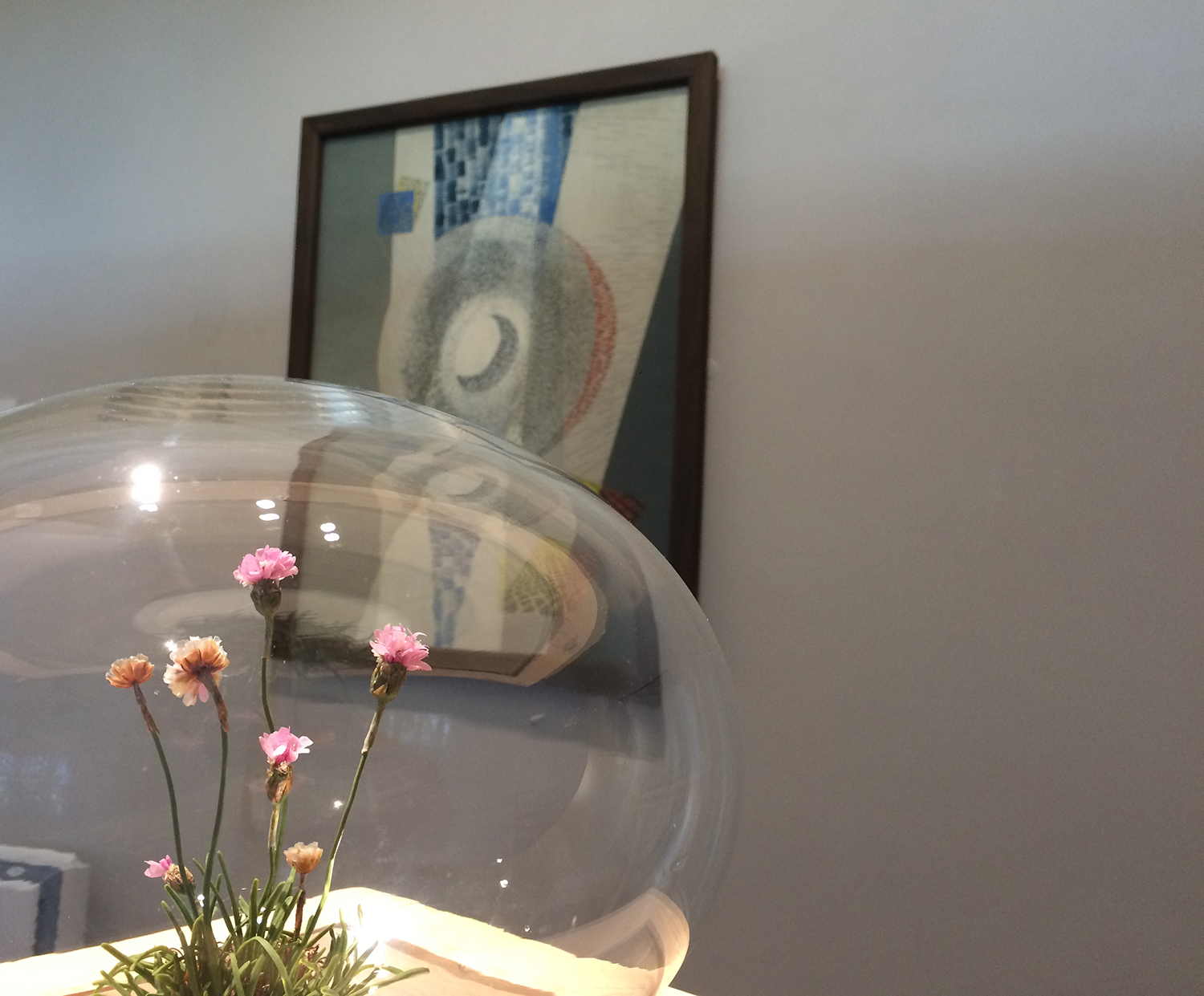trofannolismo / the naturalists, oriel plas glyn y weddw, 2018
The more pointed the egg the more stable it is on the slope. The image on the invitation is of half a seabird’s egg, after having a successful hatch, one imagines. It is a compelling image: a tiny dappled eggshell on a cliff edge, surrounded by hard rock and lichen with a backdrop of the heavens, clouds and sea mist drifting by. In this simple image I see a plethora of meanings, which are expanded on in the new work by Morag Colquhoun entitled Trofannolismo.
In this short text I will simply respond to a few of the most pertinent aspects of her extraordinary exhibition, from the perspective of an artist struggling with the everyday dilemmas of climate change and the demise of wildlife across the globe. This week we heard that humanity has wiped out 60% of all mammals, birds, fish and reptiles since 1970, reported by the World Wide Fund for Nature.(1)
My reaction to this fact is nothing short of utter horror and disbelief. Yet I recall the work that Morag has made in response to her explorations of wildlife on Ynys Enlli - Bardsey Island and the efforts of ecologists, poets, naturalists, artists and fishermen in communicating the changing and improving ecosystems on the island, and it brings some hope. I suppose I can manage the microcosmic brilliance of such research with its expansive and open-ended myriad of cultural and historical references. Morag’s body of work allows for a non-reductive shaped world. The apocalyptic version of the natural world can serve to render us depressed and helpless, so we become even more useless in the field of environmental activism. Morag’s research brings light, and the possibility of redress to the dim prospect of our global demise by our own hand.
It would be remiss not to mention the sheer wonder of the silk and beeswax flowers and the taxidermy birds. The act of the hand in locating these frozen objects into our psyche is an act of some stealth. The dead birds were a result of the island’s lighthouse, which used to confuse the birds at night so they often collided with the lenses. Now the replacement LED lighting on the lighthouse has no such devastating effects on the passage of migratory birds. The seemingly displaced Moholy-Nagy painting (borrowed from the National Museum of Wales) is in fact a central element to the exhibition along with his film of 1936 ‘Lobsters’ one of the first marine documentaries. Morag has this visionary sense of inter-connectedness which flows throughout the show and gives the work new contexts in which to be viewed and reinterpreted.
What makes Morag’s approach so interesting is that she deals with the assemblage of objects in such a way that allows all kinds of personal, historical, aesthetic, poetic, political, natural and playful references to co-exist coherently. It’s a rare and highly stimulating experience. The work operates through links, which are in no way arbitrary and rely on a vision of synchronicity and connectedness. And this approach echoes what all the great environmental thinkers of today are saying. Multiple futures coexist, and we are entangled in many co-ordinations; sharing goals emerging through collaborations and understanding of local knowledge are just a few examples of how we can devise new ways of problem solving and addressing the mistakes of the past.
Precarity is now everyone’s problem; there is no stability. Perhaps our heads need to get more pointed so we don’t all fall off the cliff.
(1) In this report Mike Barrett, Executive Director of WWF says, ‘A 60% decline in human population would be the equivalent to emptying North America, South America, Africa, China and Oceania. That is the scale of what we have done.’
The exhibition included work by: Colin Evans, Gareth Griffith, Doris Lockley, Laszlo Moholy-Nagy (lent by Amgueddfa Cymru - National Museum of Wales), Rachel Porter, Simon Royer, Simon Whitehead and Lisa Wilkens along with a series of taxidermy birds also lent by Amgueddfa Cymru - National Museum of Wales.
Acknowledgements: Kathrin Böhm, Tony Davies/Henfron Welsh Biochar, Christine Evans, Colin Evans, Dale Evans, Ernest Evans, Peter Finnemore, Jen Gallichan/Amgueddfa Cymru - National Museum of Wales, Peter Howlett, Gareth Irwin/Penpont Green Woodwork, Raymond Jones/Melin Teifi, Sorcha Lewis/Troedrhiwdrain, Ann Lockley, Ben Porter, Jo Porter, Alaw Price, Kathryn Roberts/Gate Glassworks, Nia Roberts, Janice Vincett.
Cefnogwyd gan Gyngor Celfyddydau Cymru, Dŵr Cymru/Welsh Water ac Ymddiriedolaeth Ynys Enlli.
Supported by the Arts Council of Wales, Dŵr Cymru/Welsh Water and Bardsey Island Trust.
















